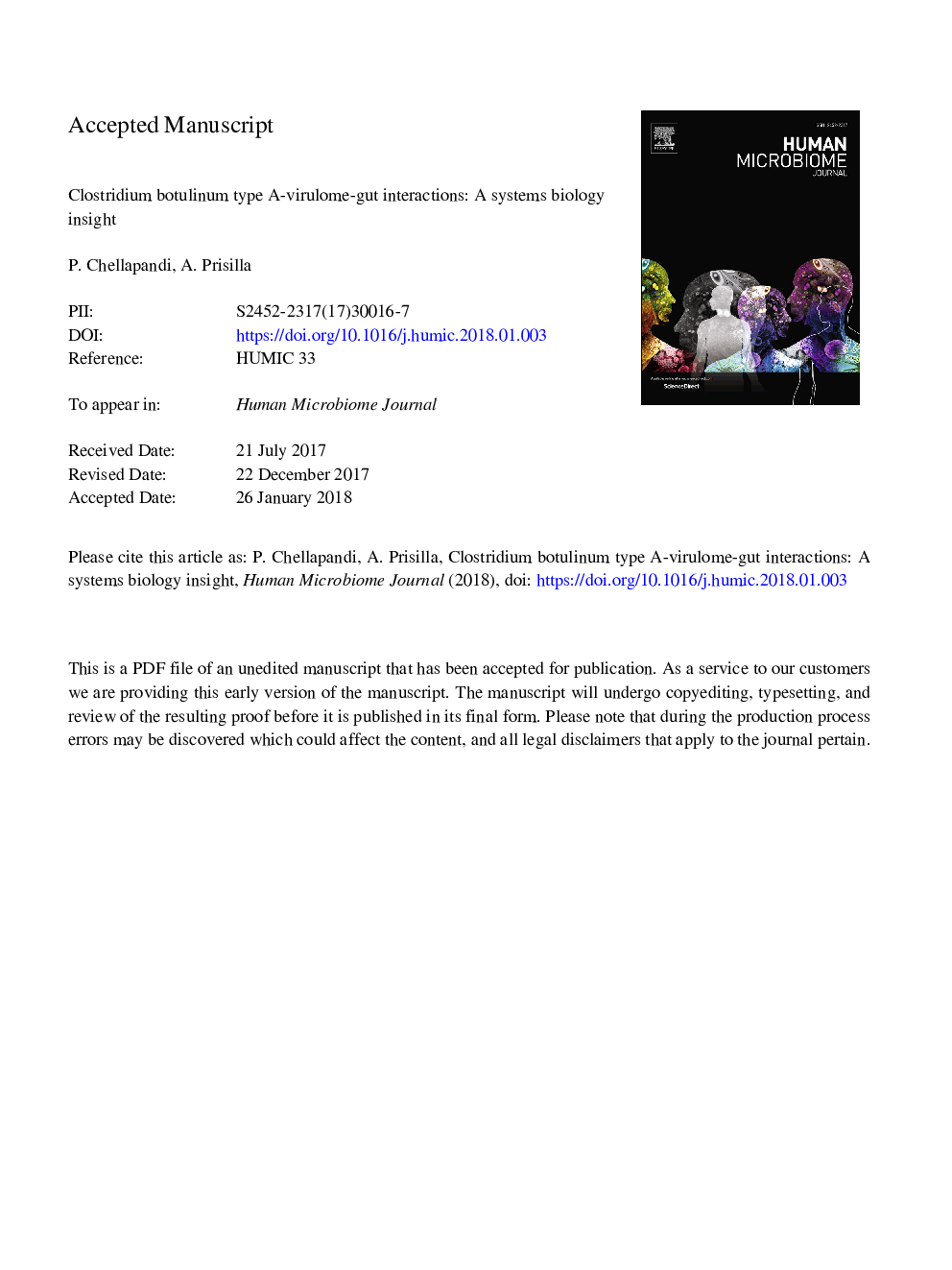| Article ID | Journal | Published Year | Pages | File Type |
|---|---|---|---|---|
| 8745612 | Human Microbiome Journal | 2018 | 29 Pages |
Abstract
Clostridium botulinum is a foodborne bacterium capable of producing a potent botulinum neurotoxin with seven serotypes (A-G). Type A strains are being a great concern for causing foodborne, infant and wound botulism in worldwide. Antibacterial resistance is a not a big problem for treating diseases caused by this organism, but antitoxin treatment available today has not been reverse the paralysis. C. botulinum strain Hall A Sanger is a clinically important strain studied intensively for its biochemical and molecular characteristics. Gene cluster for botulinum toxin is strain-specific in nature, which might have evolved independently of each other. Type A strains have a common mechanism for transcription and metabolic regulation of botulinum toxin. BotR is a known transcriptional regulator that controls the expression of botulinum toxin in type A strains in response to nutritional factors in the gut. Two-component system is a key regulator required for the full virulence of this bacterium underlying response to the host and environmental factors. Amino-acid induced germination and chitin catabolic systems are firmly established in this organism, performing the separate processes of toxin or virulence factor synthesis, sporulation and germination. Several virulence factors have recently been identified from this genome, but molecular function of them in the gut of humans is not yet to be known. Genome-scale models are being as an integrated knowledge base for detailed understanding of its host-microbe interactions during the intoxication process.
Related Topics
Life Sciences
Immunology and Microbiology
Microbiology
Authors
P. Chellapandi, A. Prisilla,
